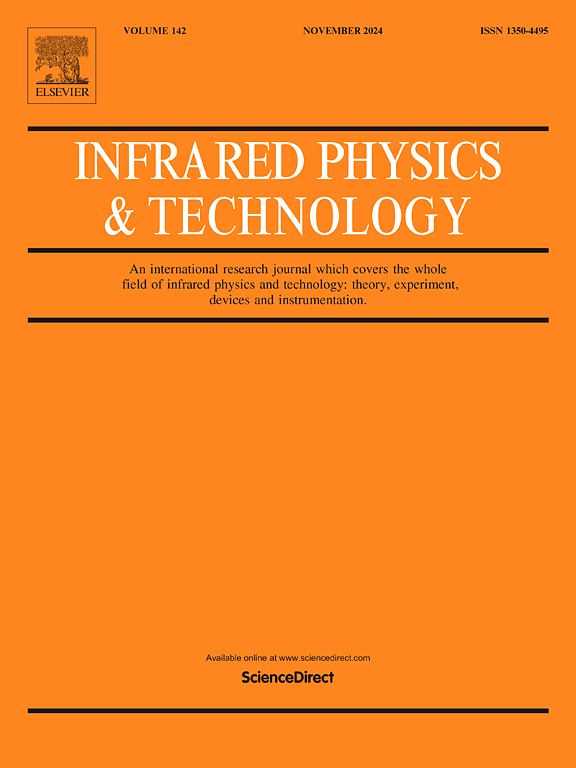Timing jitter reduction of the sub-nanosecond Nd:YAG/Cr:YAG microchip laser via external optical triggering
IF 3.1
3区 物理与天体物理
Q2 INSTRUMENTS & INSTRUMENTATION
引用次数: 0
Abstract
A scheme to improve the temporal pulse stability of the passively Q-switched (PQS) sub-nanosecond Nd:YAG/Cr:YAG microchip laser was designed. By injection nanosecond laser pulses into the saturable absorber (SA) of the composite crystal, the SA is bleached compulsively to trigger the PQS laser and realize “optical synchronization”. As a result, the PQS sub-nanosecond laser pulses are locked to the injected pulses temporally and the timing jitter is greatly suppressed. In this work, the timing jitter of the PQS sub-nanosecond laser pulses was reduced from 561.2 ns to 344 ps using the nanosecond laser pulse as the reference signal, improved by over 1600 times, while the required pulse energy was merely at the level of 100 μJ. Based on the rate equations, a timing jitter model of the PQS laser was established by introducing random disturbance and injected photon number density, which could depict the temporal behavior and contributing factors. The dynamic process of locking the sub-nanosecond laser pulses was discussed by varying the injecting pulse energy, triggering time and peak pump power, with consistent theoretical and experimental results. It was also found that the pulse waveform, output power stability and beam quality benefit from optical triggering. This simple and efficient scheme of timing-jitter reduction lays the foundation for high-performance sub-nanosecond lasers, which is of great importance in high-precision ranging and lidar systems.
外光触发对亚纳秒Nd:YAG/Cr:YAG微芯片激光器定时抖动的抑制
设计了一种提高被动调q (PQS)亚纳秒Nd:YAG/Cr:YAG微芯片激光器时间脉冲稳定性的方案。通过将纳秒级激光脉冲注入复合晶体的可饱和吸收剂(SA)中,对SA进行强制漂白,触发PQS激光器,实现“光同步”。结果表明,PQS亚纳秒激光脉冲被暂时锁定在注入脉冲上,大大抑制了时间抖动。本文以纳秒激光脉冲为参考信号,将PQS亚纳秒激光脉冲的时序抖动从561.2 ns降低到344 ps,提高了1600倍以上,而所需脉冲能量仅为100 μJ。在速率方程的基础上,通过引入随机扰动和注入光子数密度,建立了PQS激光器的时序抖动模型,该模型可以描述PQS激光器的时序行为及其影响因素。通过改变注入脉冲能量、触发时间和峰值泵浦功率,讨论了亚纳秒激光脉冲锁定的动态过程,得到了一致的理论和实验结果。光触发对脉冲波形、输出功率稳定性和光束质量都有改善。这种简单有效的减时抖动方案为高性能亚纳秒激光器奠定了基础,在高精度测距和激光雷达系统中具有重要意义。
本文章由计算机程序翻译,如有差异,请以英文原文为准。
求助全文
约1分钟内获得全文
求助全文
来源期刊
CiteScore
5.70
自引率
12.10%
发文量
400
审稿时长
67 days
期刊介绍:
The Journal covers the entire field of infrared physics and technology: theory, experiment, application, devices and instrumentation. Infrared'' is defined as covering the near, mid and far infrared (terahertz) regions from 0.75um (750nm) to 1mm (300GHz.) Submissions in the 300GHz to 100GHz region may be accepted at the editors discretion if their content is relevant to shorter wavelengths. Submissions must be primarily concerned with and directly relevant to this spectral region.
Its core topics can be summarized as the generation, propagation and detection, of infrared radiation; the associated optics, materials and devices; and its use in all fields of science, industry, engineering and medicine.
Infrared techniques occur in many different fields, notably spectroscopy and interferometry; material characterization and processing; atmospheric physics, astronomy and space research. Scientific aspects include lasers, quantum optics, quantum electronics, image processing and semiconductor physics. Some important applications are medical diagnostics and treatment, industrial inspection and environmental monitoring.

 求助内容:
求助内容: 应助结果提醒方式:
应助结果提醒方式:


